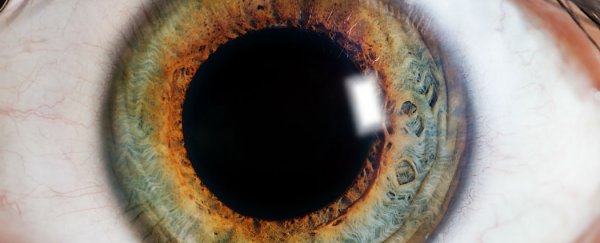Eyes are so incredibly complex, Charles Darwin himself said the idea of them having evolved seemed "absurd in the highest possible degree". But they did, and this TED-ed video shows how.
Scientists have traced the origin of the not-so-humble human eyeball to no less than 500 million years ago, when single-celled organisms, such as the minuscule euglena, evolved a simple, flat 'light spot' on the exterior of their bodies. This cluster of light-sensitive proteins was connected to the creatures' elongated tail-like flagellums, which were used to propel them through the water. This allowed them to respond to sources of light - and therefore food - and start hurtling towards it.
A type of flatworm called planaria evolved a slightly more complex version, which worked even better, because it was curved inwards so it could better detect the direction of the incoming light. Not only could the worm use this organ to seek out light-reflecting food, but it could also figure out where pockets of low light were located and use these as shelter from predators.
Then, says Joshua Harvey in the video above, over the course of several millennia, these cup-shaped organs started shifting inside various creatures, such as the nautilus, until only a small opening was left exposed. What resulted was a 'pinhole effect', which happened to dramatically increase resolution, and cut down on distortion, because only a thin beam of light could make it through the tiny opening to be processed.
But we can do better than a simple pinhole. The key to sight as we know it is the lens. The origin of the all-important lens has been traced back to a layer of transparent cells that covered the pinhole opening for protection against the elements. Now being closed off, the internal structure of the eye became filled with fluid, and this actually helps to optimise light sensitivity and processing, says Harvey.
This development was followed by the evolution of a crystalline structure behind the lens that stuck around, because it was great at focussing incoming light to a single point on the retina at the back. This simple structure eventually became the human eye, as a coloured ring called the iris started appearing, so that the amount of light entering the internal bits and pieces could be adjusted according to the environment. The outer white area, known as the sclera, formed to keep the eye's structure in place, and we even evolved tear ducts so our eyes would be protected by a continuous supply of clear, protective film.
But there's no point having all of this cool stuff for processing light with if we don't know what to do with any of that information. So as the human eye evolved to come more complex and efficient, so too did the human brain grow to complement it. Watch the TED-ed video above to find out how.
And have you ever wondered how blue eyes got their colour? Turns out they don't get their colour from pigment - it's actually way more fascinating than that.
Sources: TED-ed, SPLOID. Facebook image by Stefano Garau at Shutterstock
